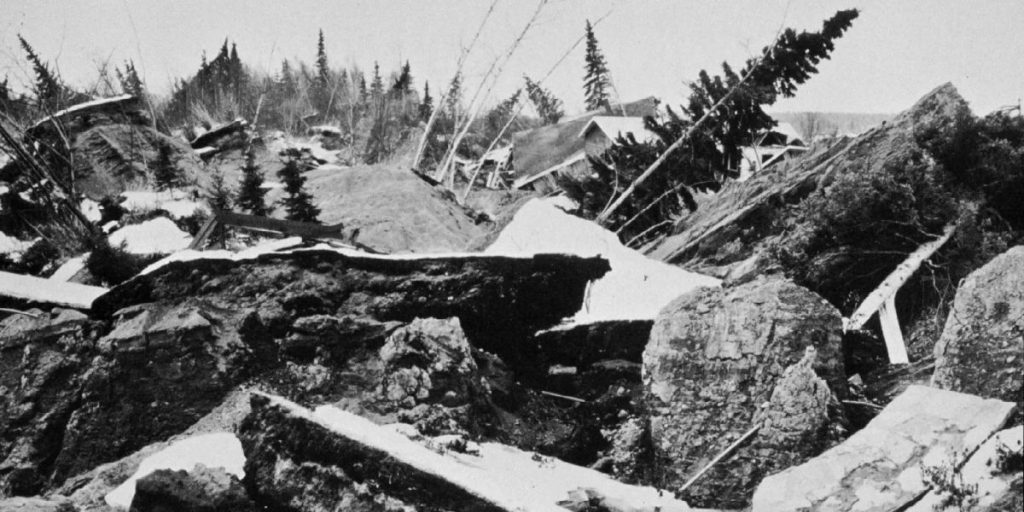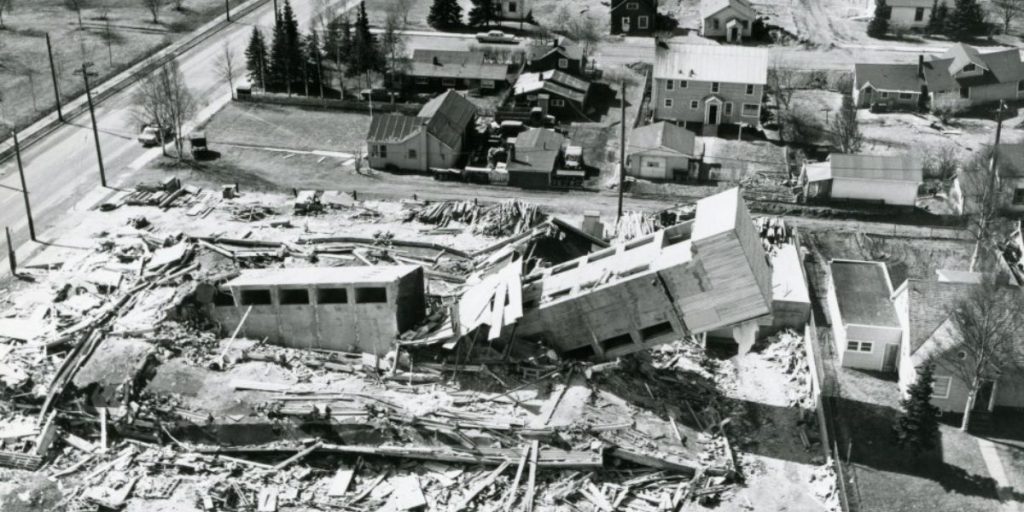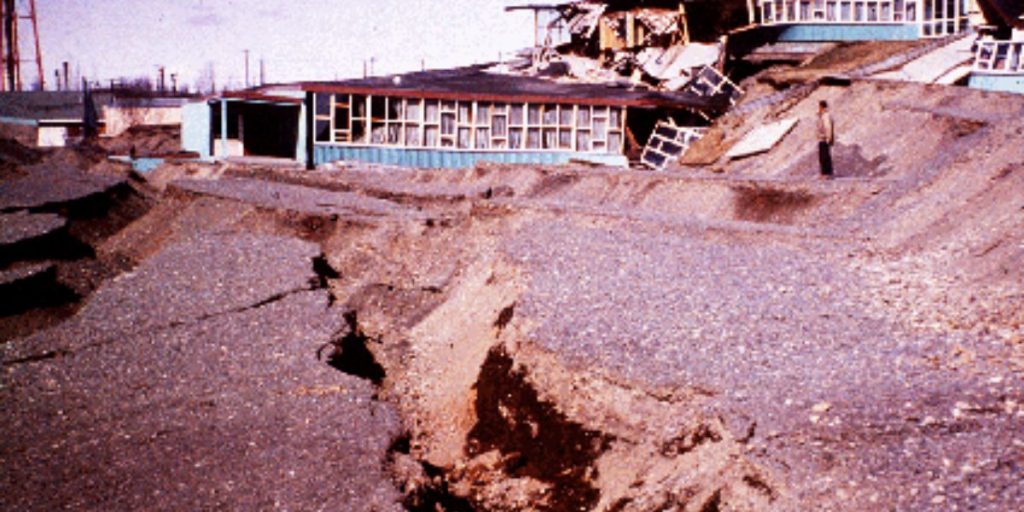Alaska, the largest state in the United States, is no stranger to seismic activity. Nestled along the Pacific Ring of Fire, where tectonic plates collide, Alaska experiences frequent earthquakes.
Among these seismic events, one stands out as the most powerful and devastating in the state’s history—THE GREAT ALASKA EARTHQUAKE OF 1964.
The Tremor’s Magnitude
On March 27, 1964, at 5:36 PM local time, the ground beneath Alaska shook violently as a massive earthquake struck. Measuring a staggering 9.2 on the moment magnitude scale, the Great Alaska Earthquake remains the most powerful earthquake ever recorded in North America and the second-largest earthquake globally.

Tectonic Setting
The seismic energy released during the 1964 earthquake originated from the subduction zone where the Pacific Plate dives beneath the North American Plate. This dynamic interaction led to the sudden rupture along the fault line, resulting in the colossal release of energy that reverberated across the region.
Epicenter and Aftershocks

The earthquake’s epicenter was located in the Prince William Sound region, approximately 75 miles east of Anchorage. The violent shaking lasted for nearly four and a half minutes, causing widespread devastation. The initial quake triggered a series of powerful aftershocks, some of which measured above magnitude 7.0, further compounding the destruction.
| Rank | Year | Earthquake Name | Magnitude | Death Toll |
| 1 | 1964 | Good Friday Earthquake | 9.2 | 139 |
| 2 | 1957 | Andreanof Islands | 8.6 | 0 |
| 3 | 1906 | Valdez-Cordova | 8.3 | 0 |
| 4 | 1938 | Lituya Bay | 8.3 | 5 |
| 5 | 2018 | Anchorage | 7.1 | 0 |
Devastation and Impact
The Great Alaska Earthquake caused extensive damage across a vast area. Coastal areas experienced severe ground subsidence, leading to the submergence of land. The resulting tsunamis ravaged coastal communities, with waves reaching heights of over 200 feet in some locations. The port town of Valdez was virtually destroyed as the ground dropped several feet, submerging buildings and infrastructure.
In Anchorage, the state’s largest city, the damage was profound. Buildings and homes were reduced to rubble, bridges collapsed, and landslides reshaped the terrain. The economic toll was immense, with losses totaling hundreds of millions of dollars in 1964—a staggering amount at that time.
Human Toll

The earthquake claimed the lives of 131 people, and thousands were injured. The combination of the initial quake, subsequent aftershocks, and tsunamis left a lasting impact on the affected communities. The disaster prompted significant advancements in earthquake preparedness and infrastructure resilience, influencing building codes and emergency response strategies.
Legacy and Lessons Learned
The Great Alaska Earthquake of 1964 remains a pivotal event in the history of seismic research and preparedness. The lessons learned from this devastating event have informed earthquake-resistant building practices, early warning systems, and community preparedness efforts not only in Alaska but globally.
Conclusion
As Alaska continues to grapple with its seismic reality, the Great Alaska Earthquake of 1964 serves as a stark reminder of the immense power nature wields. The resilience displayed by Alaskans in the aftermath of this catastrophic event has left an indelible mark on the state’s history, shaping its approach to seismic risk mitigation and disaster preparedness for generations to come.